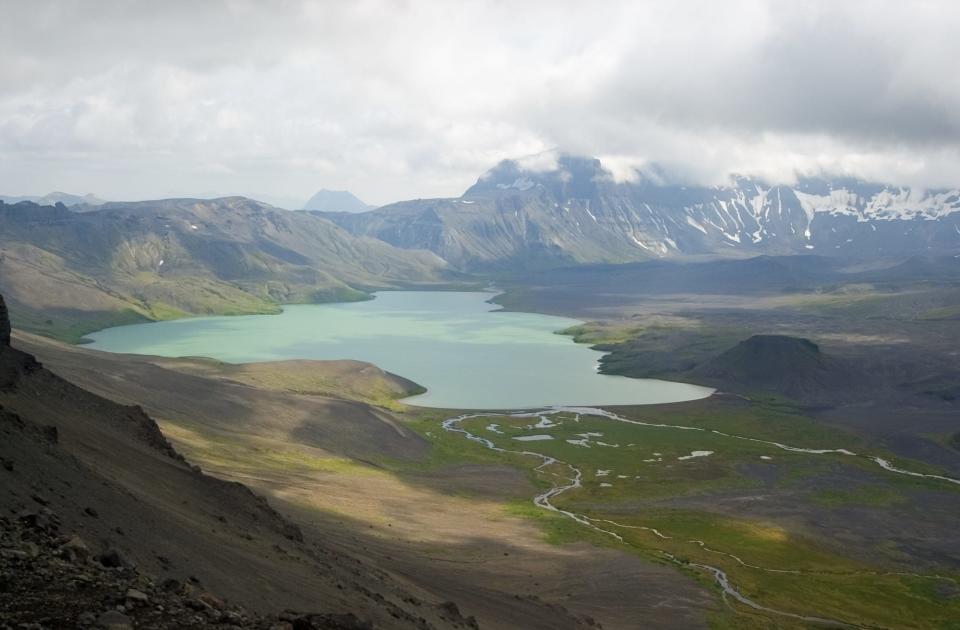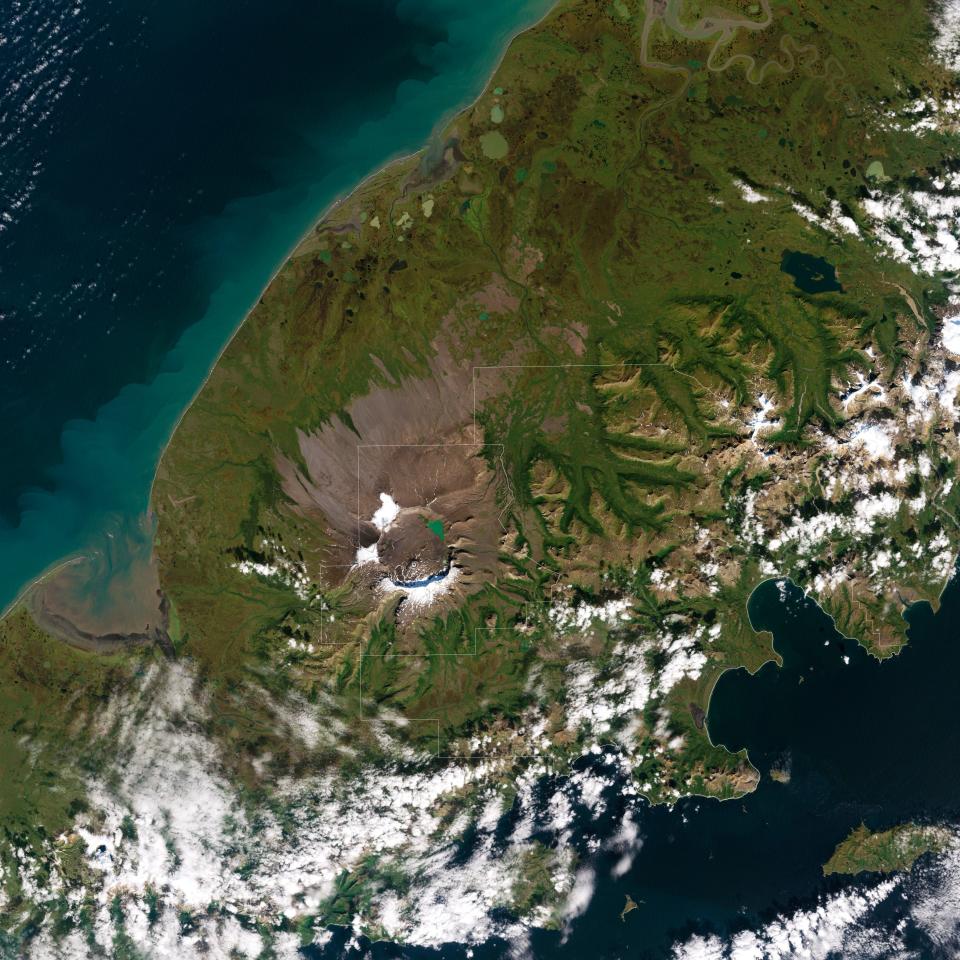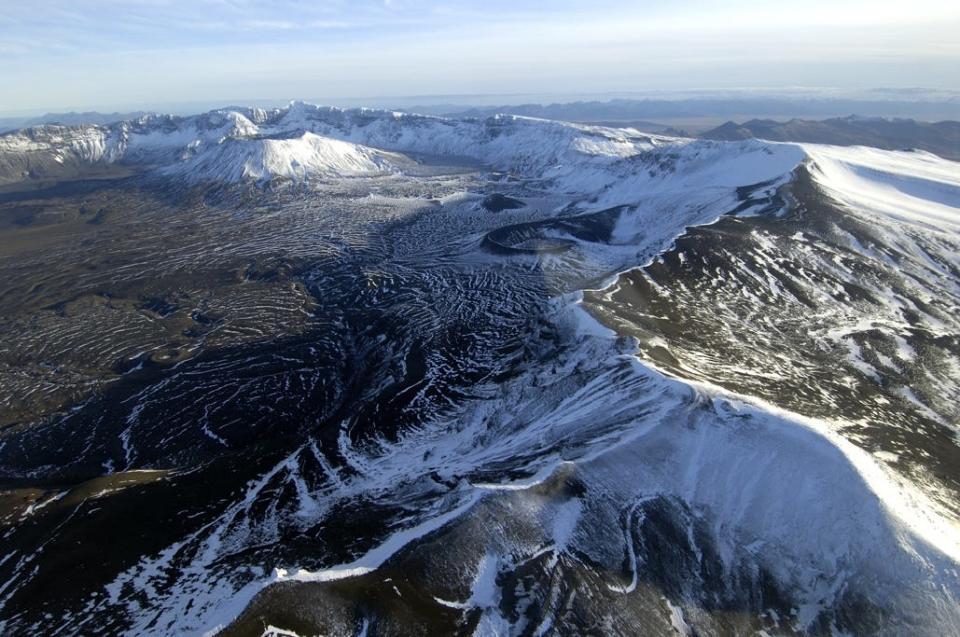Alaska's Aniakchak volcano could soon erupt due to earthquakes, scientists say
The chances of an Alaskan volcano erupting in the near future have increased due to recent earthquake activity, scientists say.
Magma centered under the Aniakchak volcano, about 416 miles southwest of Anchorage in a designated National Monument and Preserve, is intruding at a depth of 2 to 2.5 miles below sea level, increasing the likelihood of an eruption over the coming months to years, according to an April 13 update from the U.S. Geological Survey.
If an eruption were to occur, the primary hazards would be from volcanic ashfall and drifting ash clouds. Local communities near the caldera could experience additional hazardous phenomena such as ballistics (flying rocks) or pyroclastic flows, impacting infrastructure and disrupting air travel, the Alaska Volcano Observatory (AVO) said.

A larger eruption could cause hot ash to fall on snow-covered slopes outside the caldera – a large depression formed when a volcano erupts and collapses – which could lead to volcanic mudflows in drainages around the volcano.
Areas closer to the eruption site, especially within the caldera, could experience additional hazardous phenomena, such as ballistics or pyroclastic flows.

When was the last Aniakchak eruption?
The last Aniakchak volcano eruption occurred May 1, 1931, and lasted six weeks, producing ashfall more than 124 miles from the volcano.
The first ten days of the eruption saw strong explosive activity and later stages of the eruption produced smaller explosions and lava flow in the caldera. Strong earthquakes were reported throughout the eruption.
Current seismic unrest ongoing for months
The current period of seismic unrest began in October 2022, prompting officials to raise the Aviation Color Code to yellow in February, although scientists say that magma intrusions do not always guarantee an eruption.
Similar episodes of unrest at other volcanoes worldwide end in eruptions about half the time. Unrest can last for months or years prior to an eruption.
Scientists detected dozens of earthquakes per day in mid-February before measurements of smaller quakes were disrupted by a partial network outage in March due to low power levels caused by snow burial. The largest recent event was a magnitude 3.3 on April 6.

As of April 13, scientists are unable to locate smaller earthquakes due to the outage.
There have been no visual changes to the ground surface or hydrology, however, radars have detected high rates of ground uplift. No gas emissions or temperature changes have been observed.
“The presence of earthquakes and ground uplift at the same time and in the same general area suggests that magma is moving upwards beneath Aniakchak caldera,” the report states.
Scientists believe it’s unlikely that an eruption much larger than 1931 will occur, but one that is similar or smaller could.
Prior to an eruption, there will likely be additional signals that would allow officials to provide advanced warning, AVO said.
More volcanoes to watch in the US
In Alaska, volcanoes Great Sitkin, Semisopochnoi, Takawangha, Tanaga and Trident are showing signs of possible eruption, according to the U.S. Geological Survey's daily update.
In Hawaii, Kilauea volcano is showing signs of a possible eruption.
More coverage by USA TODAY
What are the tallest volcanoes on Earth? How many active volcanoes are in the US?
What's everyone talking about? Sign up for our trending newsletter to get the latest news of the day
Camille Fine is a trending visual producer on USA TODAY's NOW team.
This article originally appeared on USA TODAY: Alasaka's Aniakchak National Monument volcano could soon erupt

